Active Topics
-
Brave New World 1.8.4 is now available!NT Content & Features: Requests, Suggestion...Version 9 Beta Public Beta Test DownloadSolo Thief Challenge (Thief SSCC)VideosSOON.
News
#GamerGate—A long-time-coming wake up call?
 29 Sep 2014 Archael
Read More
Comments: 129
Ah yes, #GamerGate. The current talk of the gaming town. While we here at Insane Difficulty are primarily concerned with making awesome mods, none can ignore the current flaming shadow-flare wave of... fire that is the #GamerGate controversy.
29 Sep 2014 Archael
Read More
Comments: 129
Ah yes, #GamerGate. The current talk of the gaming town. While we here at Insane Difficulty are primarily concerned with making awesome mods, none can ignore the current flaming shadow-flare wave of... fire that is the #GamerGate controversy.
For the sake of staying informed (and forming your own opinion), you should definitely read:
- The Subreddit Kotaku In Action, which tracks the on-goings of #GamerGate and game publications.
- A Pro-#GamerGate Article — FEMINIST BULLIES TEARING THE VIDEO GAME INDUSTRY APART
- An Anti-#GamerGate Article — 'Gamers' don't have to be your audience. 'Gamers' are over.
- Another Anti-#GamerGate Article — Gaming Is Leaving “Gamers” Behind
- A Neutral Article — #GamerGate – An Issue With Two Sides
BlazBlue: Chrono Phantasma (Vita) Review
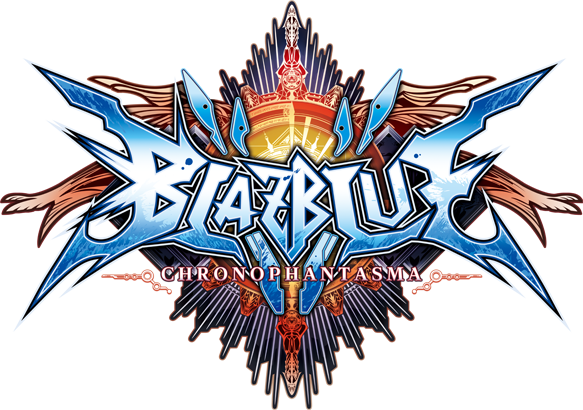 13 Aug 2014 Advent
Read More
Comments: 17
BlazBlue: Chrono Phantasma (henceforth referred to as "Phantasma") is the third installment in the BlazBlue series, following Calamity Trigger and Contimuum Shift.
13 Aug 2014 Advent
Read More
Comments: 17
BlazBlue: Chrono Phantasma (henceforth referred to as "Phantasma") is the third installment in the BlazBlue series, following Calamity Trigger and Contimuum Shift.
BlazBlue is the spiritual successor to the Guilty Gear franchise, and, as such, is also developed by Aksys Games (also known as Arc System Works in Japan).
As a fighting game, Phantasma is in a class all its own. I don't mean it's the best fighting game out there, but I do think you'd be hard pressed to find one that could stand toe to toe with it besides Street Fighter. BlazBlue fills the void that Guilty Gear left in its wake.
Before I begin, I'd like to state that the reason I clarify that I'm reviewing the Vita version isn't because of extenuating issues with the Vita version (like with my Battle Royale review), but rather because the Vita version is awesome, and the console version has a bit -- not much, but some -- more content.
So let's check it out, shall we?
Characters
Oh, man. Where do I begin? You start out with 23 playable characters, one character unlockable by clearing Story Mode, and currently an additional two via DLC, with two more -- Celica A. Mercury, and Lambda-11 due for release this Fall.
Each character has a distinctive battle style, there are no clone characters. The closest thing to clone characters are Relius and Carl Clover who do use the same fighting style, but they're also Father and Son. It can be argued that Hazama and Terumi have similar styles as well, but they're effectively the same person.
This doesn't just extend to how the character plays as far as commands go, some even have their own mechanics, but I'll get into that later.
Story
This is probably one of the last things you'd expect to see in a fighting game review, but make no mistake, this game has an absolutely amazing story. The story mode of Phantasma plays out in a Visual Novel style format with some fights spread out here and there, and a few choices.
There are three different storylines, all of which are connected, and they all kept me absolutely enthralled from start to finish. Every character makes an appearance, everyone is very memorable, and the storyline itself is very, very intricate.
As a newcomer to the series I was able to dive right in and pick up most things by just following the story of Phantasma, relying on the wikia to fill in the few blanks I had left once I was done. I know I'm gushing, but I fucking loved the story.
Mechanics
The mechanics of Phantasma at its core are very similar to Guilty Gear and other fighting games, so I'm gonna skip the basic ones and cut to the chase.
The differing mechanics I mentioned earlier usually involve some variant of the Heat Gauge, sometimes completely replacing it. Not all characters do this, but I'm not going to talk about all of them that do. Just enough to give you sort of an idea on how it changes.
Hakumen has what's called the Magatama Meter instead of the Heat Gauge. You have up to eight Magatama, with one being generated each time the meter fills. The meter fills (slowly) by doing absolutely nothing, but of course fills faster when you're fighting. The Magatama are spent with certain attacks, all of which have a visual cue on screen. This alone drastically alters how he plays, as Magatama management becomes important.
Another example is a character that I main, Izayoi. Izayoi has two modes, her normal mode, which has a defensive playstyle, and her Gain Art mode. In her normal mode, you build Zero-Type stocks, and in Gain Art, you spend them to perform special abilities while in that mode. A lot of the special moves you spend stocks to perform in Gain Art mode you can do in normal mode, so what's the point?
Well, the point is that in Gain Art mode, a lot of your moves change and your dash is greatly enhanced, making her play very differently; it switches her from a defensive playstyle to a highly aggressive playstyle with the push of a button.
Going back to the default Heat Gauge though, it primarily serves two functions: your Distortion Drives and your Astral Heat.
Distortion Drives are your bread and butter special moves. All Distortion Drives use up 50% of your Heat Gauge to activate, and some of them change when you're in Overdrive, but I'll get to that in a minute.
Astral Heat is, basically, your fatality. Astral Heats have three conditions for activation: it must be a match-deciding round (both you and your opponent have won one round, and it's two rounds to win, for example), the enemy must have less than 35% health, and you need a full Heat Gauge. When all of these conditions are met, your character's portrait will begin to pulse, letting you know you can use your Astral Heat.
Astral Heats are instant kill moves, but more to the point they're like this game's teabag. You're not going to have a full Heat Gauge very often, and almost never under those conditions unless you're trying for it. And even if you do, it's usually more practical to fire off a combo, unless it's something like Noel's Valkyrie Veil; a counter.
Overdrive is a new mechanic in Chrono Phantasma. When activated, it increases the damage you dish out, and grants access to new moves unique to the character. Normally, this lasts around 5 seconds, with the duration increasing the lower your health is. Your Overdrive will fill up over time, so it's no longer set as in previous games.
If you're getting comboed pretty heavily and need an escape, however, you can sacrifice your Overdrive and instead use a Burst to get rid of some of that offensive pressure and knock your opponent back. Baiting Bursts is a very good strategy, since you're more susceptible to combos until it recharges.
Stylish Mode is a new addition to the game. Basically, Stylish Mode is an alternate playing style that's tailor made for people who've never played a fighting game or just outright suck at them. It makes pulling off those awesome combos much, much easier. It's for the kind of player who just wants to jump right in and have fun instead of going through the process of learning (or if you're thinking of trying out a new character; even I use Stylish from time to time).
I personally think it's a really great addition, as when it comes to multiplayer, Stylish puts you at more of a disadvantage because you're very predictable. There's really nothing bad I can say about it.
As a sidenote, the in-game tutorial is really very good, it explains all of this and much more very, very clearly.
Visuals
I think this is the first time I've had a section of my review be specifically for talking about the visuals, but this game deserves it. Phantasma is an absolutely gorgeous game.
From the high-definition sprites to the vibrant, hand-drawn stages, it really makes this game stand out in comparison to contemporary 3D fighters on 2D fields.
The visuals in this game are stunning.
Game Modes
Phantasma definitely has no shortage of game modes, that's for sure.
In addition to your staple Arcade and V.S. Mode, there's Score Attack, but the ones I want to touch on are the Unlimited Mars, Abyss, Highlander Assault, and Challenge modes.
Unlimited Mars mode is.. well... the Insane Difficulty mode of this game. I started it up before writing this section just to see how it plays, and I got absolutely dominated with Noel, the character who I probably have the most time on. I'm convinced that EVO players train with a combination of this and online play.
To put it more simply, Unlimited Mars pits you against ten extremely intelligent opponents where you try to get a high score. If you're connected to PSN, you can post your scores.
Abyss Mode is something I think is pretty cool. It's basically a survival mode with RPG elements thrown in. You have four different stats -- Attack, Defense, Speed, and Heat -- that you can raise as you travel through different floors. There are several different "dungeons" to choose from. The beginning ones are ~10 fights deep, but they can go into the hundreds (possibly even the thousands).
One interesting thing is that randomly during fights, you'll be interrupted by a new challenger, in a way not altogether different from Smash Bros. When you defeat this new challenger (who has increased stats, by the way) you restore more HP than you usually would and choose from four prizes.
If you don't make it to the end of your dungeon, you only keep half the cash you gained while down there, but if you finish it, you get the full take.
Challenge Mode is pretty much what you'd expect. They're 30 missions per character with increasing difficulty levels. I wish more games would do stuff like this, because it's something that I personally really enjoy.
I know that I said I'd talk about Highlander Assault mode, but due to its spoiler nature, I'll just say that it's a fun little mode where you can fight the last boss in the story mode over and over again. It is, of course, unlocked upon completion of story mode.
As an addendum, the Network mode seems to be pretty solid as well. The Vita doesn't have a lot of players (most are on the PS3) but the netcode is done rather well; I wasn't getting much lag at all.
Unlockables
This game definitely has no shortage of unlockables. There's one character -- Kagura Mutsuki -- to unlock, but I really do love all of the artwork that's unlockable, and especially the character palettes. There are 24 palettes for each character; 1-6 are unlocked by default, 7-16 are unlocked by buying them in the gallery, and everything past that is DLC, though 23 and 24 are free of charge.
Difficulty
I really enjoy the difficulty of this game. The skill floor is low, so it's easy to get started, and the skill ceiling is really, really high, as evidenced by my crucifixion at the hands of Unlimited Mars mode.
The difficulty primarily stems from knowledge of inputs and how your opponent plays, along with execution. The inputs are precise, however not so precise that yours truly can't do it. If I can do it, anyone should be able to. I suck at fighting games.
Verdict
I've looked, and looked, and looked, but I just can't find anything negative to say about this game. It's absolutely phenomenal. I always say that no game is perfect, so I never give a perfect score, but I have been proven wrong. I can't find any grievance with this game, no matter how small.
Metacritic Rating: 8.6
ID Rating: 10/10
Playstation All-Stars Battle Royale (Vita) Review
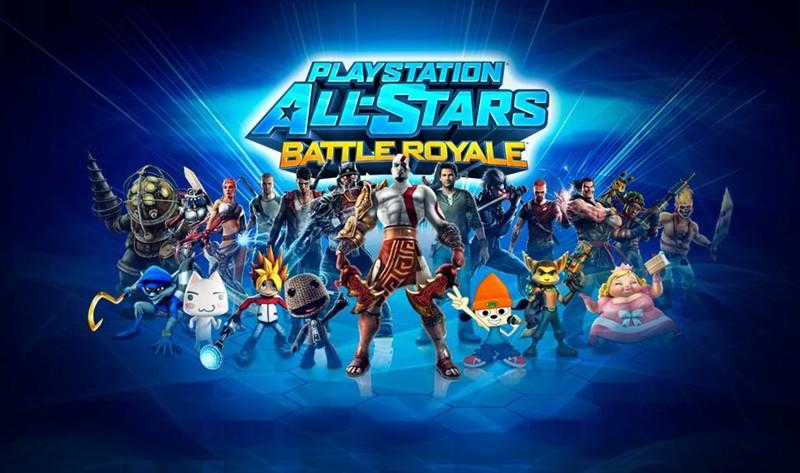 26 Jul 2014 Advent
Read More
Comments: 5
Playstation All-Stars Battle Royale (henceforth referred to as "Battle Royale" for obvious reasons), a game made by SuperBot Entertainment in conjunction with SCE Santa Monica Studio, is constantly being compared to Nintendo's hit franchise Super Smash Bros, and for good reason -- it's inspired by it.
26 Jul 2014 Advent
Read More
Comments: 5
Playstation All-Stars Battle Royale (henceforth referred to as "Battle Royale" for obvious reasons), a game made by SuperBot Entertainment in conjunction with SCE Santa Monica Studio, is constantly being compared to Nintendo's hit franchise Super Smash Bros, and for good reason -- it's inspired by it.
Most of the reviews out there that I've read for this game either compare it to Smash or complain that it should be judged on its own merits. Well, the result is the same either way in my eyes, so let's take a look at it, shall we?
Characters
Battle Royale starts you out with twenty characters, with an additional four available via DLC. Some people who own a PS3 might recognize more of these characters than I did, but most of them were rather obscure to me, and even after looking them all up, I still saw a few from series I'd never even heard of.
The first one that jumped out at me personally was Raiden, followed by reboot Dante and Kratos. The rest were just kinda meh to me, but that's a rather minor nail in the coffin of this game, so let's move on.
Items
On its own or in the realm of relativity, this game doesn't really deliver in this department. There are twenty-one items in the game, more than enough to give it some flavor and depth, but it doesn't really do anything with them. The items are more of an afterthought than anything, and don't really add any depth to the game itself, which is due in part to the gameplay mechanics, which I'll cover later.
Stages
The stages really aren't that bad. honestly. One thing I find really interesting is that after a certain amount of time, a stage from one franchise will be invaded by elements of another franchise, changing the level up a bit.
Let's take the stage Metropolis, for instance. Metropolis is based on Ratchet and Clank, with a conveyor belt, moving platforms, and some spikey deathtraps, but after a certain amount of time, the Hydra from God of War makes an appearance, adding a new environmental hazard as it can attack characters by smashing the stage with its heads and jaws.
Unlockables
Battle Royale has some pretty cool aesthetic unlockables, however they are sadly limited to alternate costumes. Most of these are unlocked upon reaching a certain rank (you rank up as you play games; it's not just an online thing), while some others are DLC. It was pleasing to me to play as Raiden from the first level of Metal Gear Rising before losing his right eye and one of his arms.
Gameplay
And now we come down to the biggest disappointment of this game, the final nail in the coffin, the gameplay. The gameplay of this game on its own is mediocre, but compared to a Smash title it's abysmal.
The first thing that jumped out at me was that the game itself feels stiff. When you're doing air combos, you don't get the feeling that you're really suspended in the air. The only thing that really feels as it should are ground combos. Dodging isn't really all that bad, nor is blocking, but the former could use a bit of work.
But there are two real reasons why I just can't play this game in addition to the stiff movement. One of them is the fact that you cannot kill someone without doing a super attack. This, in and of itself, makes this game unplayable for me. I'm told that something similar is done in [i]Dissidia[i], but I've never played it so I can't really make a valid comparison in that regard.
What this single factor amounts to is me flailing around the screen, all of my attacks doing absolutely nothing except for building my super gauge, and then killing them off with my super attack. If my super attack misses or is interrupted, this process repeats itself. There is literally nothing that attacking your opponent does besides make them stagger or rag doll (obviously) and build your super gauge. It wouldn't be as bad (though nowhere near optimal) if your gauge filled more quickly the more damage they've taken.
The second factor I don't think would be anywhere near as bad on the PS3, and that's camera control. When you're on one side of the level, and someone else is on the other, the camera zooms out so far that I lose track of my character. This often culminates with seeing my marker fly across the screen because I can't see what I'm doing, and is incredibly frustrating.
Difficulty
This game's difficulty -- assuming you're talking about the actual difficulty setting and not the flaws in the gameplay -- isn't all that bad. I wouldn't compare it to Smash simply because in Smash it's the gameplay and the way the AI utilizes it that makes it fun, while in Battle Royale that's not really the case, but to be honest this is the least of my complaints, as you can see.
Metacritic Rating: 7.7/10
ID Rating: 4.5/10
Announcing the 2014 Insane Difficulty Let's Rage Olympics!
 17 Jul 2014 Advent
Read More
Comments: 7
Yep, it's that time of year again folks -- time for the second annual Insane Difficulty Let's Rage Olympics!
17 Jul 2014 Advent
Read More
Comments: 7
Yep, it's that time of year again folks -- time for the second annual Insane Difficulty Let's Rage Olympics!
If you don't know what the Let's Rage Olympics is a competition started by Stann last year that pits everyone against each other in five different predetermined challenge runs of different difficult games.
The Let's Rage Olympics are really fun to take part in, though as the name implies, you will probably rage quite a bit, but that's part of the fun!
If you want to sign up, or just want to check it out some more, you can head on over to this thread for more information.
What Makes A Good Mod?
 07 Feb 2014 Advent
Read More
Comments: 18
We've talked about what modding a game involves, but another huge misconception I find is what constitutes a good mod. For the sake of this article, we're going to be restricting this largely to difficulty mods, for obvious reasons.
07 Feb 2014 Advent
Read More
Comments: 18
We've talked about what modding a game involves, but another huge misconception I find is what constitutes a good mod. For the sake of this article, we're going to be restricting this largely to difficulty mods, for obvious reasons.
To create a good difficulty mod, you have to look at the following:
- Difficulty Curve
- Difficulty Type
- Content
- Tedium
- Technical Limitations
Each of these must be managed and/or worked around appropriately in order to make a good mod, and to be honest, these are largely applicable to any type of mod, not just difficulty mods.
Difficulty Curve
First and foremost, a difficulty curve is absolutely essential to any kind of mod, hardtype or not.
A mod that is really tough from the get go will quickly reach the point where strategical difficulty becomes statistical difficulty, or in other words, your well thought out strategies will become simply a numbers game. Or, failing that, will reach a point where the player simply isn't enjoying themselves anymore. A huge offender of this is Phantasy Star IV: Purgatory Mode. The difficulty is very high at the beginning (characters being one shot in the first dungeon) and does not let up.
It's also very possible for your mod to be too easy as well. Ideally, you want a difficulty curve that challenges the player to step up their game, but you don't want the game to beat them into submission either.
Difficulty Type
Just as important as the difficulty curve is the type of difficulty. I'm not going to say that any one type of difficulty is superior to another, because to be quite honest it's all subjective. What you find fun may not be what another person finds fun.
Most difficulty mods try to have a heavy emphasis on what I call strategical difficulty. The term is self-explanatory; the difficulty comes from the strategies you employ rather than your overall stats. Final Fantasy Tactics 1.3 and Final Fantasy VI: Brave New World are two mods that do this very well. This is generally a very fun type of difficulty that a lot of people who enjoy hardtypes enjoy.
Some people find enjoyment in the type of statistical difficulty I mentioned before, and there's nothing wrong with that. If your mod is targeting that crowd of people, have at it, just don't expect those outside of that group to find it very fun or entertaining.
There's another type of difficulty that you generally won't see emphasized too much in hardtypes, which are mostly RPGs: reaction-based difficulty. A really good example of this is our Megaman X Hardtype created by Hart-Hunt. The emphasis on your reaction time is displayed quite clearly in the very first level and sets the tone for the rest of the mod.
Then there are certain mods that combine all three of these: strategy, statistical, and reaction time. In this case, the statistical part of the formula is most often done through equipment choices and, if applicable, the game's job/class system.
As a side note, a concept regarding difficulty that is something of a golden rule is to never break an established "law" without telling the player. If the player has gotten used to playing a certain way (most of the time different from the original), you don't simply change that completely without giving the player some kind of clue. Teaching the player to use different strategies is well and good, but don't do something like emphasize highly aggressive play in the first 75% of the game and then completely nullify that playstyle in the last 25%.
Content
Content in a hardtype is many things. It is the number of viable equipment and abilities, the new stuff you add to the game, and, to add onto the first, builds.
The best poster child for content I've seen has got to be, without a doubt, Brave New World. BTB and Synchysi have added a lot of things to the game, and in doing so made practically everything viable. Every piece of equipment and every ability is useful, niche or not. Every character is viable and has multiple builds, each of them with different strengths and weaknesses. This adds a lot of replayability to the mod as a result.
Something to always be cautious of, however, is overbalancing. There's a really good article on balance already that goes into it in detail. Ideally, you want to make as many things viable as you can, but also give the player the freedom to experiment. Pigeon-holing the player into using that one ability for a given fight over all others (not to be confused with an intelligent choice of abilities for a fight) is not a good thing.
Tedium
Tedium goes hand in hand with the first two points about difficulty curve and type. If you want grinding to be a necessity, that's fine. Just don't expect a lot of people to be a huge fan of your mod, because let's face it, people generally don't like tedious, arbitrary, repetitive tasks.
The key word there is "arbitrary." I'll use 1.3 as an example: everything in the Deep Dungeon is level 99, but the Deep Dungeon is optional. You can complete the game without ever grinding a single point of exp or JP.
Brave New World (most mods that we host, really) does a very good job of this. If you fight every battle you get into, then you won't have to grind at all. If you run from battles, there's obviously going to come a point where you need to do a little grinding to keep pace.
It's always good to see that a modder has put up safeguards to deter the brute force (beating a fight with levels, not strategy) approach to a given boss fight. as well. For example, when my mod, Breath of Fire III: Dragon Trial, was going through one of its first betas, a certain tester brute forced his way past the first boss. To curb that urge, I made the ability (that he was grinding for) do significantly less damage. You can also spin this another way, and make a boss counter a particular ability with an attack that almost wipes out your entire party.
Speaking on modders for a moment, there is also something to be said about how you, as a modder, try to balance around what the player may or may not do. It is a mistake to try and have complete control over what the player will do, because that stymies creativity and interesting mechanics.
"The hand of the developer should be invisible and gentle, not gigantic and shoved up your ass." - BTB, Co-creator of Brave New World
Technical Limitations
Ah, technical limitations, the bane of a modder. Anyone who has ever modded something knows all too well what these roadblocks feel like. However, all is not lost; these roadblocks are expected. As a modder, you have to find a way to work around them, as we all do.
Sometimes you work around them with mechanics, sometimes you cut to the root of the problem and change it with an Assembly hack, but regardless, you still have to get past it or your project is doomed.
Do not be afraid to ask for help. That's what we're here for.
Got A Question About Modding? This is for you.
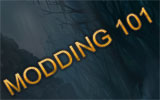 07 Feb 2014 Advent
Read More
Comments: 24
Let's talk about modding. No, I don't mean stuff like Skyrim or New Vegas mods, I mean the kind of stuff we host here on Insane Difficulty: modified versions of your favorite old school games. Modding isn't simple, but it's not impossible either, as the downloads section shows. I've been seeing a lot of threads pop up lately, each with their own misconceptions about how modding is done, so I figured now would be a good time to talk about it.
07 Feb 2014 Advent
Read More
Comments: 24
Let's talk about modding. No, I don't mean stuff like Skyrim or New Vegas mods, I mean the kind of stuff we host here on Insane Difficulty: modified versions of your favorite old school games. Modding isn't simple, but it's not impossible either, as the downloads section shows. I've been seeing a lot of threads pop up lately, each with their own misconceptions about how modding is done, so I figured now would be a good time to talk about it.
Before I go any farther, this is something that has to be said. No one will make your mod for you. All of us who mod or hack these games do so because we love the game in question. Most games are pretty simple nowadays, and others have a few imperfections, but if polished could have shined like a diamond. We do what we do in order to shine these games to something closer to perfection. We do not do it for attention, or for recognition.
First and foremost, you need to figure out the scope of your mod. There's a pretty good article on this already, so I'll keep this part fairly brief. You need to figure out what kind of mod you want. You have to have some kind of vision. Do you want a difficulty mod? Do you want to rebalance the game and get rid of that one ability (or bring it more in line with the others) that makes everything really easy? You need to be able to answer these questions. You may not know exactly what kind of mod when you start. This is okay, just keep in mind that the lack of a vision will spell death for your project in the long run. Scope Creep is a very real concern, and something you always need to be aware of.
This next one is possibly the most important thing to understand: Time. Modding a game is a huge time commitment; it's not something that will be finished quickly. Any good mod has months, sometimes years of work put into it. Taking breaks is fine; no one will fault you for that, but this is something that needs to be understood. As a result, burn outs are a very real concern. Take breaks.
Alright, now that we have that out of the way, let's get into how you're actually going to mod your game. I'm going to list off the different tools you can use to accomplish this from the simplest to the most complex.
Editors
Thankfully, we have a wide range of tools at our disposal. The simplest and most popular of these are game editors. These are not universal, as no two games have exactly the same code. The quickest way to find one would probably be to use Google. For your benefit, I'll list off some popular games that we know to have functioning editors.
- Final Fantasy Tactics
- Final Fantasy [I-VII]
- Chrono Trigger
- Golden Sun
- Golden Sun: The Lost Age
- Dragon Warrior [1-4]
- Megaman [1-6]
- Ghosts n' Goblins
- Pokemon [Various]
- Fire Emblem [8] – The Sacred Stones
- Super Mario World
- Super Mario RPG: Legend of the Seven Stars
There are, of course, more than I've listed here, but you can do some research and find them rather easily. Zophar's Domain has a ton of them.
There are, however, times when a game does not have an editor, like Breath of Fire III for example. What do you do then? Well, at this point it's a lot more difficult if your game doesn't have documentation. Either way, at this point you need to rely on a few other tools.
Hex Editors
Hex Editors are basically what you're going to be hacking the game with. It basically opens the ROM or ISO and allows you to go in and edit the bytes of data (displayed in hexadecimal form) contained within. I won't go into this too much, as there are many, many resources available to you via Google. My preferred hex editor is HxD, if you're curious.
Tile Molester
Tile Molester is more for palette editing than tweaking the actual game. It essentially converts hex values to a color map. Each hex value corresponds to a different color. You can import palettes to make it easier. I'll be the first to say that editing color palettes via Tile Molester is a massive pain, as some of our modders can attest to.
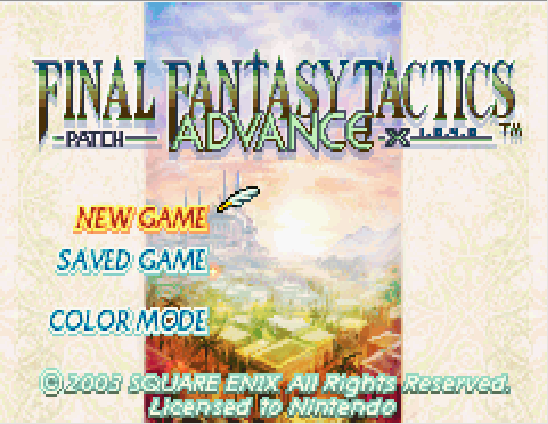
See how that has "Patch" and "X" to the left and right of the usual title? That's done with Tile Molester.
Another thing to note is that you cannot load an ISO itself into Tile Molester, only ROMs. You can, however, extract files from the ISO and load them in Tile Molester. That's how you edit item icons or World Map Ramza in Final Fantasy Tactics.
Disassemblers
Let me just say right now that disassemblers are currently out of my league. I don't use them, because I don't know Assembly, the language that these games are coded in. If you don't know Assembly, you're not gonna get anything out these. Essentially, a disassembler allows you to track the data being called by the game so that you can find the bytes you're looking for easier. They're highly advanced.
I'd like to also add that if your game doesn't have an editor or extensive documentation, a disassembler is really your only option, because unless you know what bytes to change in a hex editor, you're not going to be modding anything.
As you can see, modding isn't something you can get done in five minutes with no effort. It's a process. You will never know everything when you begin; you will learn more modding your game than you ever could by playing it. Anyone who has a mod on here will tell you that.
Modding is fun, though. It's like breathing new life into a piece of your childhood to share with others. Always remember that no one here started modding knowing exactly what to do. We all started from the same place: with that one desire to make a clouded diamond shine.
Brave New World 1.4.0 Released!
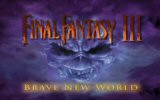 02 Feb 2014 BTB
Read More
Comments: 0
We are proud to announce the release of Brave New World 1.4.0, which features:
02 Feb 2014 BTB
Read More
Comments: 0
We are proud to announce the release of Brave New World 1.4.0, which features:
- An overhaul of Edgar's tools, including two brand new ones
- Balances and tweaks to many enemies based on player feedback
- Quite a bit more, much of which I'm not at liberty to share
.gif)
Special thanks to Anima for all of his help, as well as all of you guys in chat who provide feedback and pretty much just put up with me in general. I seriously could not have done it without you.
(NOTE:1.4.0 was initially released as 1.3.1; we have since retroactively renamed it as it was a major update)
Get Over Your Game Balance Obsession
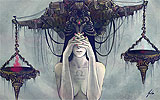 20 Jan 2014 Archael
Read More
Comments: 32
We need to talk balance. Yes, that terribly overused word in video game culture. Balance is important for the creation of entertaining and engaging titles. Intelligent balance—which rewards experimentation, knowledge, and skill—immortalizes single player campaigns and spawns eSports communities.
20 Jan 2014 Archael
Read More
Comments: 32
We need to talk balance. Yes, that terribly overused word in video game culture. Balance is important for the creation of entertaining and engaging titles. Intelligent balance—which rewards experimentation, knowledge, and skill—immortalizes single player campaigns and spawns eSports communities.
Game critics pinpoint lack of balance as a terrible design flaw, and rightly so. Many games are indeed poorly balanced, to the point where these imbalances take away from a player’s ability to derive fun. But the reverse is also true. It is entirely possible to sacrifice fun and positive emotional experiences on the altar of balance.
From a design perspective, game mechanics receive the “balanced” and “working as intended” seals of approval if they fit into a predetermined vision. Fortunately for today’s developers, the games-as-a-service model allows for the rules of a game to change after it has shipped. This puts less pressure on designers to finalize their intended design by launch day, since the holy grail of “balance” is now turned into an always moving, adjustable goal-post. From that point onward, a developer’s philosophy for balancing games is exposed;
Kill the Dissenter
This occurs when designers are reluctant to support creative experimentation or are unable to accept innocuous imbalances that appear after the game is in the hands of the consumer. This usually leads to changes which stifle creativity that comes from players.
Consider Riot Games’ League of Legends. When fans talk about the League of Legends meta-game (adaptations and strategies that transcend the prescribed rule-sets), they think about what players are commonly doing when they play. However, Riot’s philosophy towards balancing their game does not allow a true meta-game to emerge. Instead, characters and mechanics which deviate from the norm are reduced in effectiveness through a process known as nerfing.
Master Yi, a League of Legends champion designed to play the role of “Assassin” and “Fighter”, is a perfect example. Fighters are traditionally played in the top lane of the League of Legends world, while Assassins are sent to the jungle area. Players figured out how to build Master Yi for deadly effectiveness in the middle lane, which is reserved for characters of the “Mage” role. Instead of letting a true meta-game response occur, Riot knocked out Master Yi’s customized middle lane build, thus enforcing a vision of how the character must be played. The League of Legends meta-game was never given enough time to evolve or for players to develop a countering strategy.
This type of balance process can result in players feeling strangled. The psychological rewards for theory-crafting and exploration within the game’s framework are lost, replaced with a constant struggle between game developer and user for what the “allowed” way to play a game is. The designer will tell you what is fun, and what is fun might change next week.
Not “Balanced”, Just Different
In the same genre as League of Legends stands DOTA2 by Valve Corporation. DOTA2’s Naga Siren has all the skills expected of a “Support” hero, but possesses a powerful ability called Song of the Siren. Song of the Siren proved to be overwhelmingly effective in letting the Naga Siren fulfill other roles, such that of the team’s “Carry”— a hero destined to grow powerful in the later stages of the game—by accumulating in-game gold and objects. Instead of destroying the versatility created by Song of the Siren, DOTA2’s designers made the character’s weaknesses more apparent by adjusting her effectiveness during the early game with a nudge to her other skills. DOTA2’s approach to balance allows true shifts in the meta-game to occur unrestricted, even if these lead to gameplay not originally built into the game.
Emergent Gameplay
As designers, we must differentiate between actual game bugs and harmless but emergent forms of play. We must learn to let go of our brainchildren and accept that the people experiencing your game might enjoy it in a way you did not anticipate. The wrong approach to game balance breaks the spirit of immersion and fun that many designers claim to desire. Game balance should facilitate emergent fun, never destroy it.






- Account

